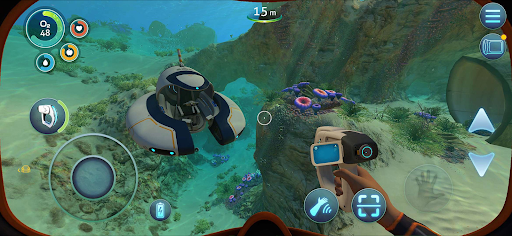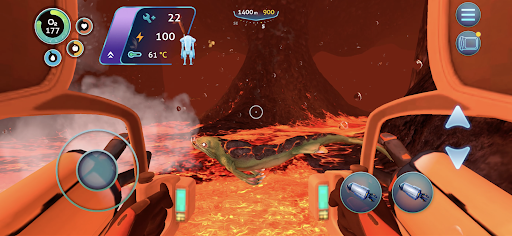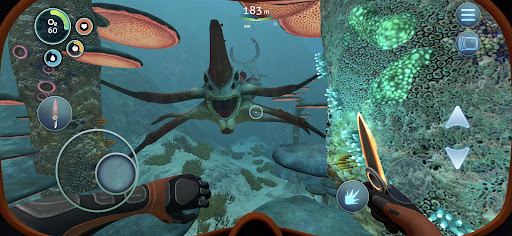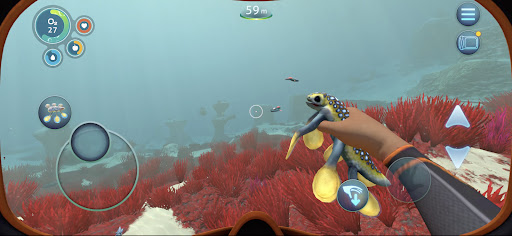Subnautica GAME
Mastering the Basics: How to Survive Your First Days
Your first hours on Planet 4546B are a frantic, beautiful, and terrifying experience. The initial shock of the Aurora starship crash gives way to an immediate, pressing goal: survival. This section offers a clear path forward, guiding you through the essential first steps of your underwater exploration journey. Think of it as your primary directive, a friend’s advice to get you stabilized before you tackle the deeper mysteries.
From Lifepod to Livable: Essential First Steps
Your Lifepod 5 is your only sanctuary in a vast, alien ocean. Your first priority is to address your basic needs: thirst, hunger, and health. This is where your resource management skills come into play immediately.
Here are the essential first steps every survivor should take:
- Secure a Water Source: Dehydration is a more immediate threat than starvation. Your first question will likely be how to get water. The answer swims all around you. Look for the distinctive, purple Bladderfish. Catching one and taking it to your Lifepod’s Fabricator allows you to craft Filtered Water. Make this your top priority.
- Find Food: The waters of the Safe Shallows are teeming with edible fish like the Peeper and Boomerang. Catch a few and use the Fabricator to cook them. A crucial Subnautica beginner tip is to only cook fish when you are ready to eat. Cooked food decomposes, while raw fish in your inventory does not.
- First Aid: Your Lifepod comes with a Medical Kit Fabricator. It produces a Med Kit on a timer. Always grab one when it’s available. You will inevitably bump into aggressive fauna or hazardous flora, and having a Med Kit on hand is vital.
- Repair the Radio: One of the most important things to do first is to repair the radio in your Lifepod. This requires a Repair Tool. Fixing the radio is your primary connection to the game’s story, providing distress signals and clues that guide your underwater exploration.
The Crafter’s Companion: Your Scanner, Fabricator, and Key Blueprints
Survival crafting is the heart of Subnautica. Your most powerful tool isn’t a weapon, but a piece of technology: the Scanner. If you take away one thing from this guide, let it be this: scan everything.
Your Fabricator is where raw materials become life-saving gear. This Subnautica crafting guide focuses on the absolute essentials you need to create first.
- The Holy Trinity of Tools:
- Scanner: Craft this immediately. It requires a Battery and Titanium. The Scanner allows you to analyze flora, fauna, and, most importantly, scannable fragments from the Aurora’s wreckage. This is how you unlock new blueprints. A key scanner tip is that even after you’ve unlocked a blueprint, scanning additional fragments of the same type will yield Titanium.
- Survival Knife: Essential for defense, cutting Creepvine Samples for Fiber Mesh, and harvesting resources from coral.
- Repair Tool: Needed to fix the Lifepod’s radio and later, to repair vehicles and seabases.
- Mobility is Life:
- Standard O₂ Tank: Increases your oxygen supply, allowing you to dive deeper and for longer. This should be an early craft.
- Fins: These significantly increase your swim speed, making resource gathering far more efficient and helping you escape danger.
- Seaglide: This handheld vehicle is a game-changer. It dramatically boosts your speed, allowing you to cover more ground and explore further with less risk. Find its fragments scattered around the Safe Shallows and nearby Kelp Forests.
Building Your First Seabase: Location and Power
While the Lifepod is a good start, you will quickly outgrow its limited storage and functionality. Building a seabase is a pivotal moment, transforming you from a mere survivor into a resident of Planet 4546B. This is where the true base building experience begins.
- Location, Location, Location: Choosing where to build your first base is a critical decision. Many players wonder about the best base locations. A fantastic starting point is on the border between the Safe Shallows and a Kelp Forest or Grassy Plateau. This provides:
- Safety: You are close to the relatively predator-free starting area.
- Resource Access: You have easy access to the Titanium and Stalker Teeth from the Kelp Forest and the Sandstone outcrops of the Grassy Plateaus.
- Solar Power: The shallow depth ensures your Solar Panels receive ample sunlight.
- Powering Your Future: A base is useless without power. Your initial options are simple but effective.
- Solar Panels: The easiest and most reliable early-game power source. Place two or three on the roof of your base for a consistent energy supply during the day.
- Bioreactor: This is a fantastic secondary power source, especially once you build in deeper, darker areas. A great bioreactor guide tip is to use it to dispose of excess organic material you gather. Oculi fish and Acid Mushrooms are surprisingly efficient fuel sources. Powering a base deep within the Jellyshroom Caves, for instance, becomes entirely possible with this technology, a feat that feels incredibly rewarding.
The Unique Genius of Subnautica
Many games let you survive, but few do it with the profound style and intelligence of Subnautica. The game’s brilliance doesn’t just come from its survival crafting loop, but from how it makes you feel. The developers at Unknown Worlds Entertainment crafted an experience that sticks with you long after you surface. This section of our Subnautica review explores the core elements that make this game a standout title in the open-world game genre.
Survival Without the Sword: A Minimal Combat Approach
One of the most defining aspects of the Subnautica gameplay is its approach to conflict. Unlike many survival games, Subnautica de-emphasizes combat, forcing players to use intellect and evasion to overcome threats. This is a core part of its unique identity. You cannot craft an assault rifle to hunt the leviathans. Your tools are primarily for survival, not for warfare.
This design choice makes every encounter with aggressive fauna a tense puzzle. When a Stalker steals your scanner drone, you don’t shoot it; you learn its behavior, perhaps offering it a piece of metal to befriend it. When facing a Reaper, your best option isn’t to fight. It is to be smarter. You learn how to deal with reaper leviathans by using your Seamoth’s perimeter defense system, deploying decoys from your Cyclops, or simply knowing when to turn off your engines and pray it passes by.
This exploration game without combat focus forces you to respect the alien planet. You are an intruder in its ecosystem, not its conqueror. This creates a more thoughtful and immersive experience, where outsmarting a predator is infinitely more satisfying than simply overpowering it. It’s a bold choice that truly sets it apart from its peers.
A Living, Breathing World: The Ecosystem of 4546B
The world of Subnautica feels alive because it operates on its own set of ecological rules. Planet 4546B is not just a backdrop for your survival; it is a complex, interconnected ecosystem with a tangible food chain and distinct biomes. This commitment to world-building is a form of environmental storytelling that makes the setting itself a main character.
Each creature has a purpose and a behavior. You will see Herbivores like the Peeper nibbling on flora, while Stalkers hunt them in the Kelp Forests. The Reefbacks, gentle giants, carry entire small ecosystems on their backs. This makes the world feel authentic and dynamic.
The game also includes fascinating, subtle details that enhance this feeling of a real, functioning world. For instance, a unique feature of the game is its environmental interactivity: certain fish, when killed by environmental hazards like geysers, will be cooked automatically. Swimming along and finding a perfectly cooked fish floating above a thermal vent is a small moment of discovery that makes you feel like you are genuinely understanding the planet’s strange physics. It’s these small, clever details that elevate the experience from a simple game to a believable and unforgettable journey of underwater exploration.






 Fairy Village
Fairy Village BitLife
BitLife Metal Slug Tactics
Metal Slug Tactics Gangs Fighter: Vice Island
Gangs Fighter: Vice Island Zombie Hunter 2
Zombie Hunter 2 Postknight 2
Postknight 2


